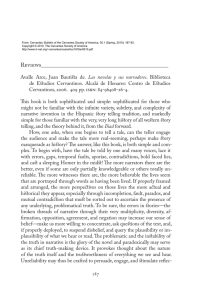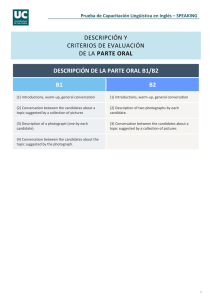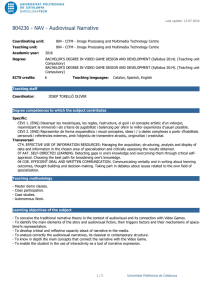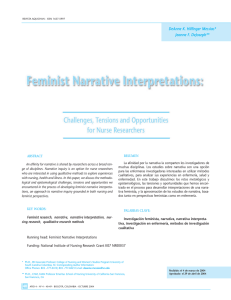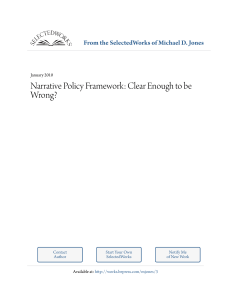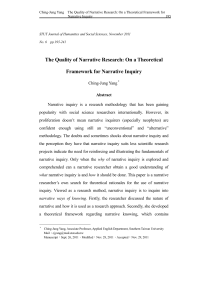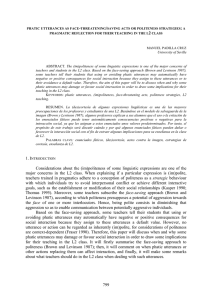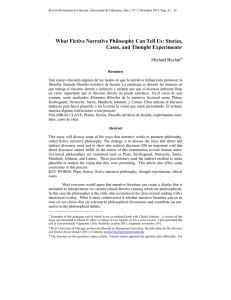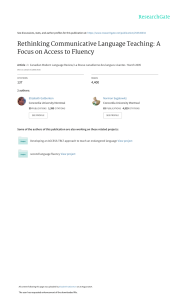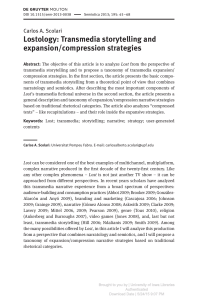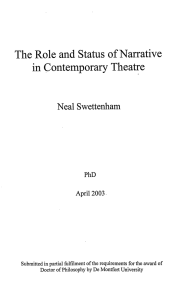Shame and Pride in Narrative
Anuncio
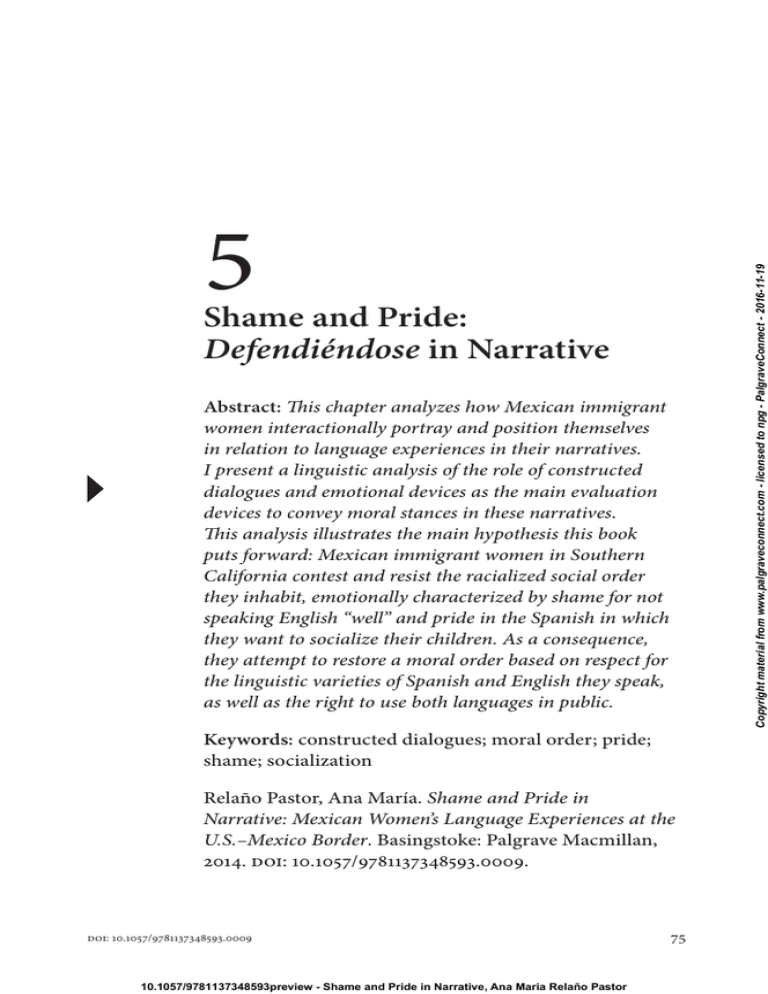
Copyright material from www.palgraveconnect.com - licensed to npg - PalgraveConnect - 2016-11-19 5 Shame and Pride: Defendiéndose in Narrative Abstract: This chapter analyzes how Mexican immigrant women interactionally portray and position themselves in relation to language experiences in their narratives. I present a linguistic analysis of the role of constructed dialogues and emotional devices as the main evaluation devices to convey moral stances in these narratives. This analysis illustrates the main hypothesis this book puts forward: Mexican immigrant women in Southern California contest and resist the racialized social order they inhabit, emotionally characterized by shame for not speaking English “well” and pride in the Spanish in which they want to socialize their children. As a consequence, they attempt to restore a moral order based on respect for the linguistic varieties of Spanish and English they speak, as well as the right to use both languages in public. Keywords: constructed dialogues; moral order; pride; shame; socialization Relaño Pastor, Ana María. Shame and Pride in Narrative: Mexican Women’s Language Experiences at the U.S.–Mexico Border. Basingstoke: Palgrave Macmillan, 2014. doi: 10.1057/9781137348593.0009. doi: 10.1057/9781137348593.0009 10.1057/9781137348593preview - Shame and Pride in Narrative, Ana Maria Relaño Pastor 75 76 Shame and Pride in Narrative Reported speech or the discursive practice of quoting oneself or others (Vološinov, 1973) has been defined as “the reflexive capacity of language to report utterances, index and describe aspects of the speech event, and guide listeners in the proper interpretation of their utterances” (Lucy, 1993, p. 11). For some research, such as that of Tannen (1989), reported speech is always “constructed” when we report on something someone has previously said, given the necessary distinction between the “reporting context”, or the context of the telling, and the “reported context”, or the world of the original words. That is, much of what appears in discourse as dialogue, or reported speech, was never uttered by anyone else in any form, but, on the contrary, it gets constructed and situated in interaction. In addition, reported speech finds its natural home in the narrative structure since it is one of the main discursive devices narrators use in recounting personal experiences. Reported speech represents the logic of past events, what happened, who said what to whom, how it was said and why. There has been controversy among researchers on the “faithfulness” of the relationship between the quoted utterances and what was originally said. Koven (2001) agrees with Tannen that speakers’ quotations are not necessarily faithful reports of the original events, and, therefore, should be considered as “constructed”, “creative performances” of past events (p. 549). Reported speech has also been connected to evaluation or assessment, displaying the speakers’ positioning towards the quote (Buttny, 1997; De Fina, 2003; O’Connor, 1997), and, consequently, serving various functions such as “to dramatize a point, to give evidence for a position, or to epitomize a condition” (Buttny, 1997, p. 478). Whether direct, reported, or “constructed”, the speaker “assimilates, reworks, and re-accentuates another’s words” (Bakhtin, 1981; Goffman, 1974, 1981) in the quoted world. That is, reported speech would be one of the most “stance-saturated” (Jaffe, 2009, p. 23) forms of speech, or, on the contrary, depending on the quotation formula chosen to portray a particular event, it can also convey a stance of “affective neutrality” (e.g., “said” versus “denied”) in Jaffe’s words. Moreover, reported speech should never be taken in isolation but in a continuous relationship with other linguistic devices conveying “epistemic and affective stances” (Jaffe, 2009, p. 3), that is related to individuals’ knowledge and emotional states, respectively. doi: 10.1057/9781137348593.0009 10.1057/9781137348593preview - Shame and Pride in Narrative, Ana Maria Relaño Pastor Copyright material from www.palgraveconnect.com - licensed to npg - PalgraveConnect - 2016-11-19 5.1 Constructed dialogues of language experiences You have reached the end of the preview for this book / chapter. You are viewing this book in preview mode, which allows selected pages to be viewed without a current Palgrave Connect subscription. Pages beyond this point are only available to subscribing institutions. If you would like access the full book for your institution please: Contact your librarian directly in order to request access, or; Use our Library Recommendation Form to recommend this book to your library (http://www.palgraveconnect.com/pc/connect/info/recommend.html), or; Use the 'Purchase' button above to buy a copy of the title from http://www.palgrave.com or an approved 3rd party. If you believe you should have subscriber access to the full book please check you are accessing Palgrave Connect from within your institution's network, or you may need to login via our Institution / Athens Login page: (http://www.palgraveconnect.com/pc/nams/svc/institutelogin? target=/index.html). Please respect intellectual property rights This material is copyright and its use is restricted by our standard site license terms and conditions (see http://www.palgraveconnect.com/pc/connect/info/terms_conditions.html). If you plan to copy, distribute or share in any format including, for the avoidance of doubt, posting on websites, you need the express prior permission of Palgrave Macmillan. To request permission please contact [email protected]. preview.html[22/12/2014 16:51:21]
